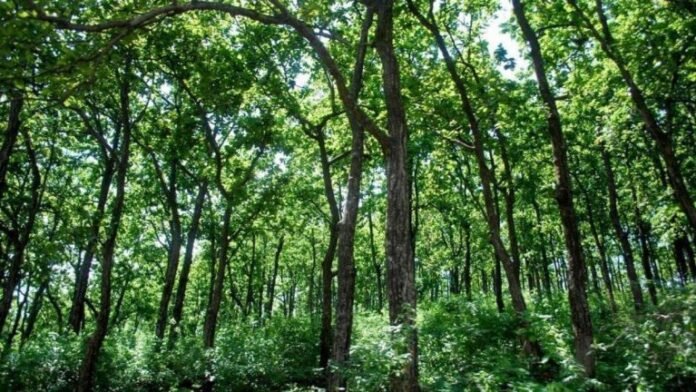New Delhi, Oct 2: In response to urgent situations where the state forest department lacks technical expertise, the Union Environment Ministry has allowed other government departments to carry out forestry activities in forests. This decision aims to prevent or manage natural disasters effectively in forest areas, ensuring prompt action during emergencies.
On Tuesday, the Ministry issued new guidelines that outline preventive measures for dealing with natural disasters in forests. This move followed a request from Uttarakhand’s Chief Secretary, who urged the Ministry and the National Disaster Management Authority (NDMA) to develop effective strategies for regions prone to frequent forest fires. The letter highlighted the need for mock drills to prepare forest staff before fire seasons and suggested that other government departments should be allowed to conduct soil and water conservation activities in forest areas.
The matter was discussed during the Forest Advisory Committee meeting on August 27. Based on the deliberations, the Ministry addressed the states and Union territories, emphasizing that under the Van (Sanrakshan Evam Samvardhan) Adhiniyam, 1980, and related guidelines, specific forestry activities are permitted in emergencies to protect wildlife, human lives, and property.
These permitted activities include creating and maintaining fire lines and constructing structures for soil and water conservation, such as check dams, water tanks, trenches, and pipelines. However, the Ministry clarified that in exceptional cases, where technical expertise is unavailable within the state forest department, other government departments may be authorized to implement these forestry activities to mitigate disaster risks. This authorization ensures efficient and effective preparatory work to avert natural disasters.
The Ministry reiterated that these activities must align with the Van (Sanrakshan Evam Samvardhan) Adhiniyam, 1980, and the working plan approved by the central government. Moreover, permission from the state forest department, under the Indian Forest Act of 1927, is required before any such work begins.
For all projects, the design and layout must be approved by the Divisional Forest Officer (DFO), who will also supervise the work. The Ministry has stressed that these activities must not harm any plant or animal life, and cutting down trees is strictly prohibited, except for pruning or clearing bushes when absolutely necessary.
The guidelines further state that the government department undertaking the forestry activities will be responsible for covering all associated costs. Importantly, the legal status of the forest will remain unchanged, and any structures constructed will continue to be owned by the forest department.
These steps reflect a proactive approach by the government in managing and preventing natural disasters in forest areas while ensuring the protection of biodiversity and forest integrity. The guidelines are expected to enhance the preparedness of the forest departments and other government entities in mitigating the impact of natural disasters, such as forest fires, while maintaining strict oversight and adherence to legal and environmental standards.



